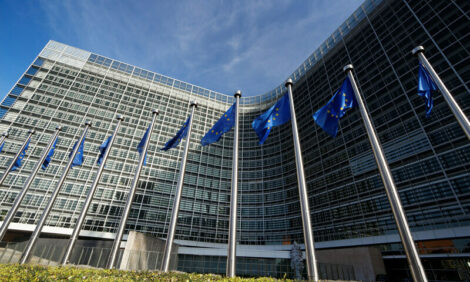



NPPC: Cap and Trade Preferable to Carbon Tax
US - A cap-and-trade programme such as the one that soon will be before the House of Representatives is preferable to a carbon tax for reducing greenhouse gas emissions, but added costs associated with climate change legislation remain a serious concern of America’s pork producers, the National Pork Producers Council said in written testimony submitted yesterday.* "We are already losing money today for every pig sold, and any additional costs will simply drive us deeper and more firmly into the hole." |
|
NPPC in a written statement to House Agriculture Committee
|
NPPC told the House Agriculture Committee that a cap-and-trade programme is likely to achieve greater and more sustainable emissions reductions—and do it for less—than a straight tax on greenhouse gas emissions. This is because cap-and-trade gives businesses flexibility to choose the lowest-cost emissions abatement method while also providing incentives for finding additional ways to reduce and offset greenhouse gas emissions.
The agriculture panel yesterday held a hearing on H.R. 2454, the American Clean Energy and Security Act of 2009, which recently was approved by the House Energy and Commerce Committee. The climate change legislation, among other things, would set a limit, or cap, on the amount of greenhouse gases that specific large emitters such as energy utilities could release to the atmosphere. Each unit of greenhouse gas an emitter is allowed to release under its cap is called a credit, which may be bought and sold. Those able to release less gas than they are allowed under their cap may sell credits; those over it will need to buy credits or reduce their energy production.
In addition, uncapped sectors may sell offset credits for adopting practices that reduce emissions. H.R. 2454 treats agriculture as an uncapped sector, an approach endorsed by NPPC. One such practice in livestock agriculture is installation of a digester to capture methane gas from manure and convert it to electricity.
“This combination of flexibility and positive incentives means a cap-and-trade programme meets the environmental goal at the lowest cost to the economy,” NPPC said.
NPPC also asked that the bill include a list of agricultural projects and practices likely to qualify for offset credits, that those producers who adopted such practices in the past be eligible for credits and that the US Department of Agriculture—not the Environmental Protection Agency—design and oversee the agricultural offsets programme.
“USDA has the institutional resources as well as the technical expertise necessary to carry out this function, while EPA does not,” NPPC said.
NPPC anticipates increased energy and input costs of at least 20 per cent under climate change legislation, and it doesn’t think revenues from the sale of carbon offset credits will balance out that increase. This remains a serious concern of pork producers, given the industry’s bleak economic outlook. NPPC will continue to monitor the legislation as it moves through Congress.
“We are already losing money today for every pig sold, and any additional costs will simply drive us deeper and more firmly into the hole,” NPPC said. The organization said pork producers lost an average of $22 on each hog sold last year, and an improved outlook early this year was wiped out by losses suffered as a result of publicity surrounding the H1N1 flu outbreak.
Added costs associated with climate change legislation also will put US pork producers at a disadvantage compared with producers overseas, NPPC said. “We are heavily dependent on the export of pork to consumers worldwide for a large portion of our revenues,” it said, “and without these export opportunities, our chances of sustaining our farms and industry simply do not exist.”








